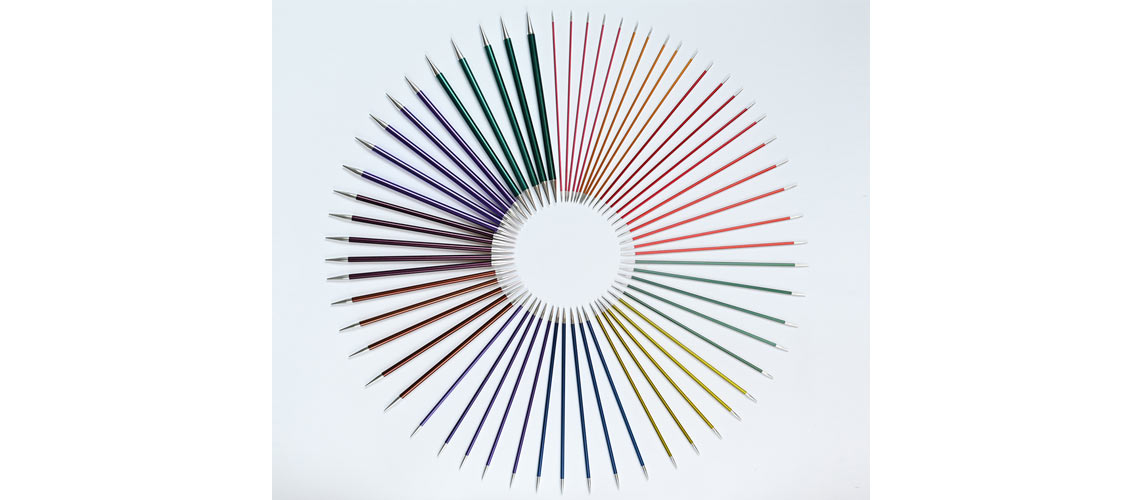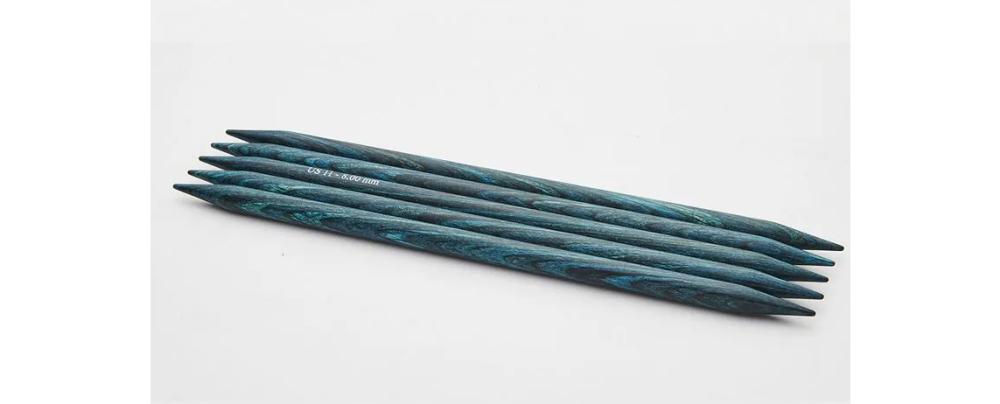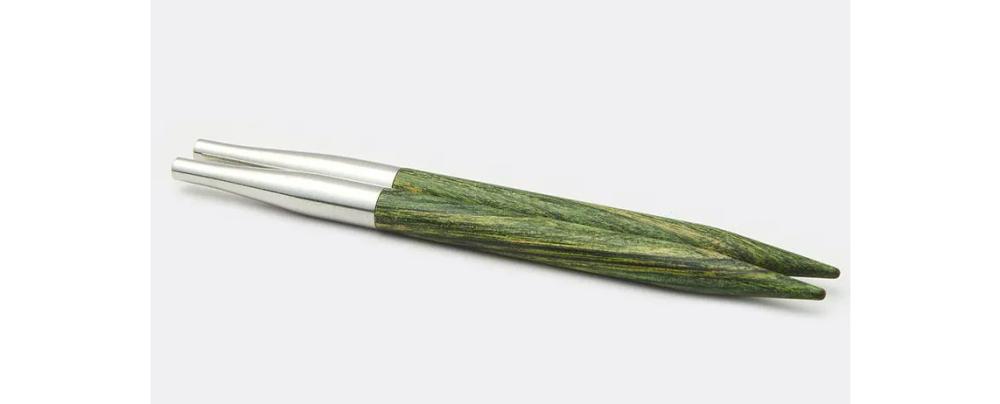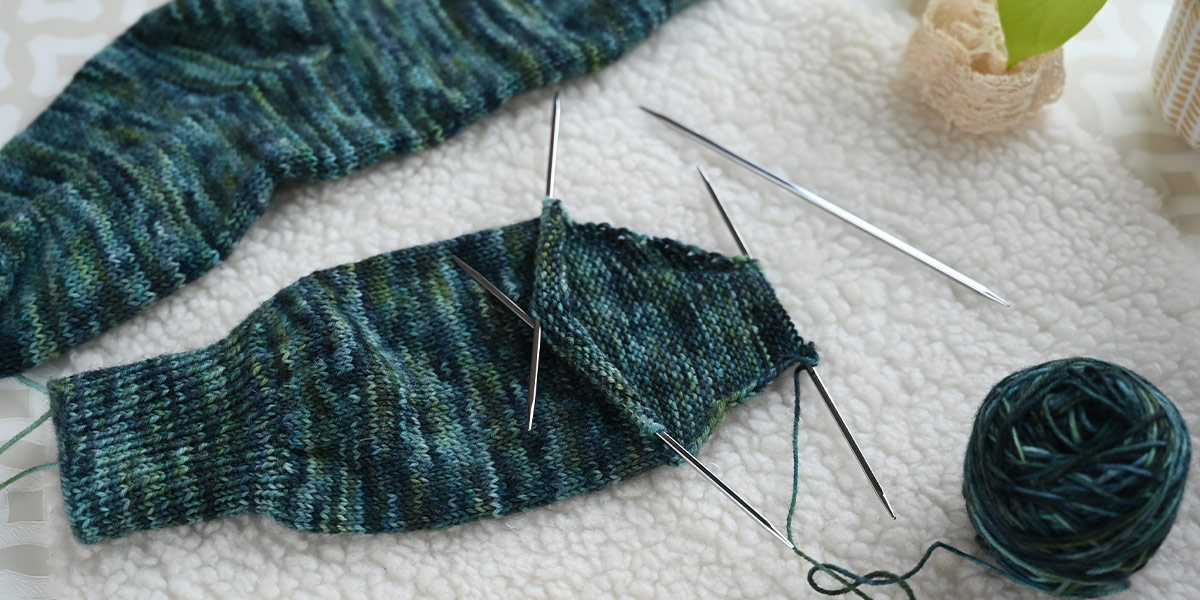Sock knitting might sound like an easy project but it’s only easy when you have the right set of knitting needles. Knitting socks majorly depends on the needles and your skills to use them properly. The options are double-pointed (DPNs), fixed circular and interchangeable circular needles. Choosing any of them is totally your call. You might be comfortable in balancing 4 DPNs or you could find your talent of the magic loop or you can pull off the wonder of knitting two-at-a-time socks on two circulars!
How to choose the best knitting needles for sock knitting?
When taking up the project of sock knitting, you should look out to prevent hassles of knitting small, in-the-round projects with fine-gauge yarn. Generally, you will be facing dropped stitches, cramped hands and more. Also, detailed knitting work like making socks requires more focus, so, if you haven’t got the right knitting needles set before, now is definitely the time.

Like all knitters are different so are the knitting tools. There is no one material that suits all. And, no choice is wrong as long as you are comfortable and confident. You should go for needles that offer the right amount of grip, along with being non-slippery material while not preventing the smooth flow of stitches. Bamboo or wood, carbon or plastic, aluminium or stainless steel, go for the needle material that you have the best understanding of. There are also special square double-pointed needles that are best for comfortable grip.
Knitting socks on Double Pointed Needles (DPNs)
The double-pointed knitting needles (DPNs) are among the best tools for knitters for round knitting. It was the original choice for knitters to make socks and to date are favoured by many. These needles come in a set of 4 or 5, in different materials. The best options of double pointed needles for knitting socks range between 2.25mm (US 1) and 2.5mm (US 2) with lengths varying from 10cm (4''), 15cm (6''): and 20cm (8'').
If you are just starting with sock knitting, this is a perfect start. You may be fiddly at first but will get a hang of it in a few rounds of stitches. In fact, many knitters find dpns better to work with. If you are still not sure, take a look at this tutorial on using double pointed needles.

Sock knitting on Circular Needles
Made for smaller round circumference projects, circular needles are ideal for seamless knitting. The magic loop technique is a comfortable choice for sock knitting. The cable that connects the tips of the circular needles is an advantage for knitting socks. This needle set has fewer opportunities for dropped stitches or other mistakes. In fact, you have the best chance of taking a break as the cable will secure the project. As there are two needle ends and not 4-5 ends of the dpns, you will feel comfortable knitting on the go.
In the range of circular needles, there is the choice of fixed circular knitting needles as well as interchangeable circular needles. Both these options are perfectly fine as long as you have the size and length that you need to knit socks. We suggest that you either go with a long circular needle with an 80cm (32″) cable or a small circular needle with a 40cm (16″) cable. For circulars, the needle size is measured from one needle tip to the other including the cable.

Magic Loop with one circular needle
The Magic Loop is a boon of circular knitting without the hassle of managing the double pointed needles. In this method, you cast on the stitches on either 24″ (60cm) or 32″ (80 cm) circular needle. The sock knitting project on a circular needle with magic loop requires the careful use of the cable that connect the needle tips to go knitting in the round.
Two Circular Knitting Needles
The two circulars method is an advanced method mostly used by experienced knitters, but that does not mean you cannot try it when you just getting the hang of knitting.
In this method, you can knit two socks at once using two separate circular knitting needles, with the same size needle and same cord length. If you use this procedure, it’s best to differentiate between the needles, whether through different color ends or materials. The most common needle sizes for this technique is usually 16″ to 36″.

Conclusion
Now that you have all the information needed on needles, decide on the yarn and pattern before you start with sock knitting. The yarn depends on the knitter if they want warm woollen socks or soft cotton for babies or just a handy pair of superwash yarn. You can follow a pattern or can go without one. It’s recommended that you knit a tension square to gauge the stitches. The gauge will be your map to plan the journey of sock knitting without a pattern.
So, here we are with just the main ways of knitting socks but there are many more. What’s your favourite technique? Follow our blog for more information on knitting needles, tools and techniques. If you decide to knit socks on circulars, go through our blog on how to choose circular knitting needles for the magic loop.












